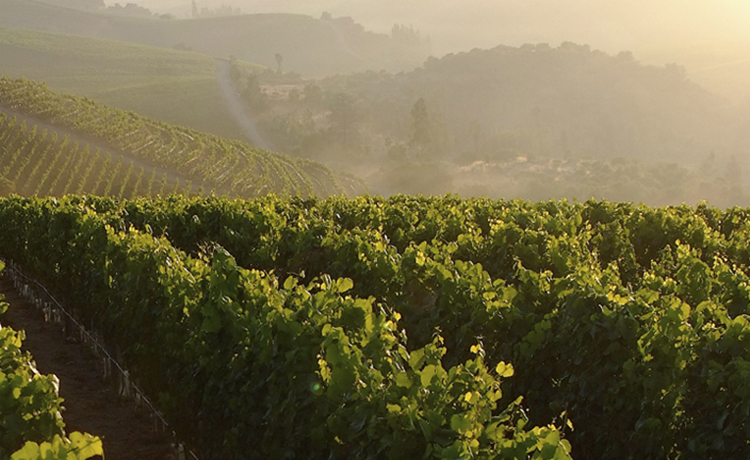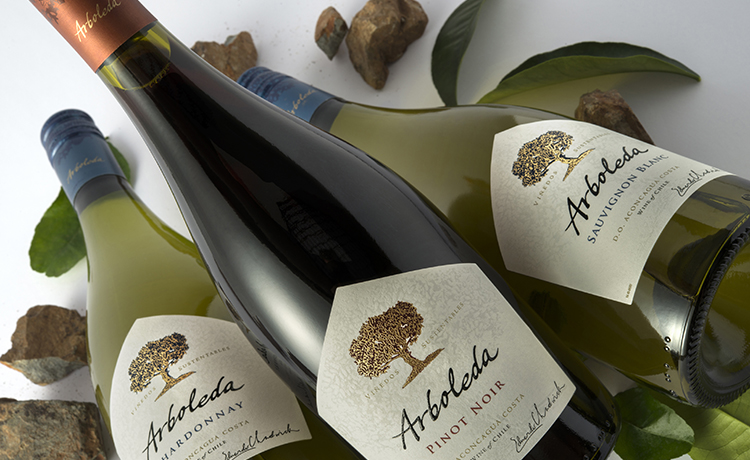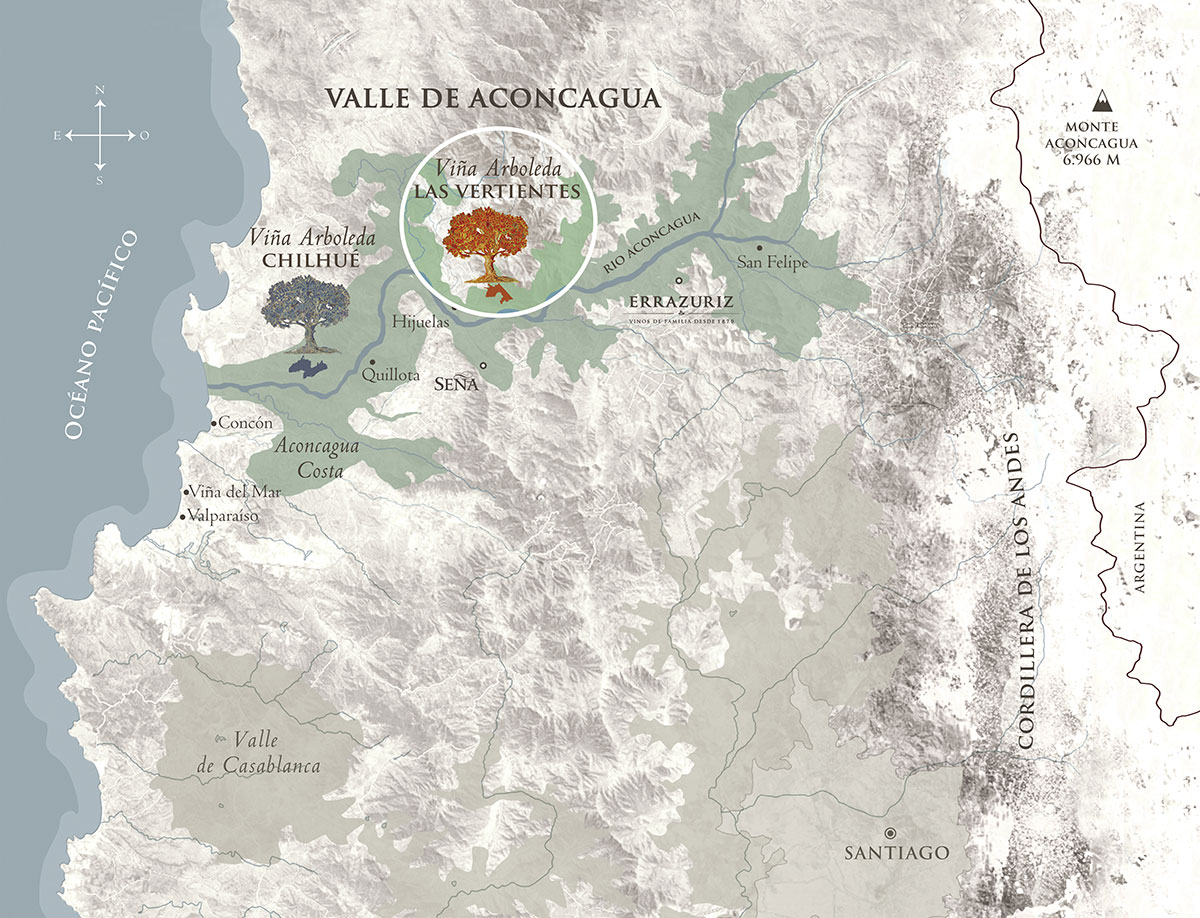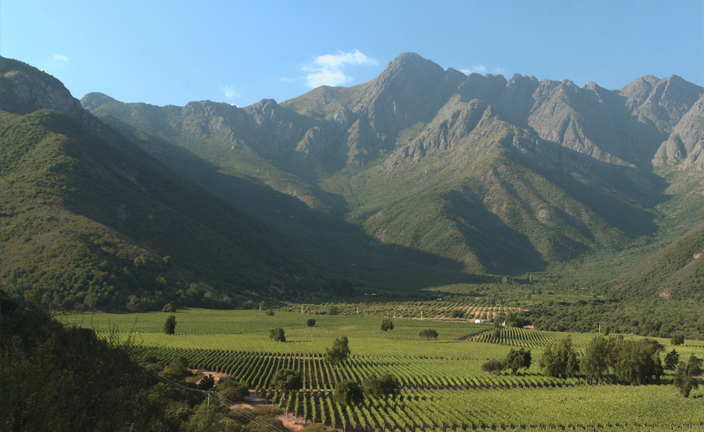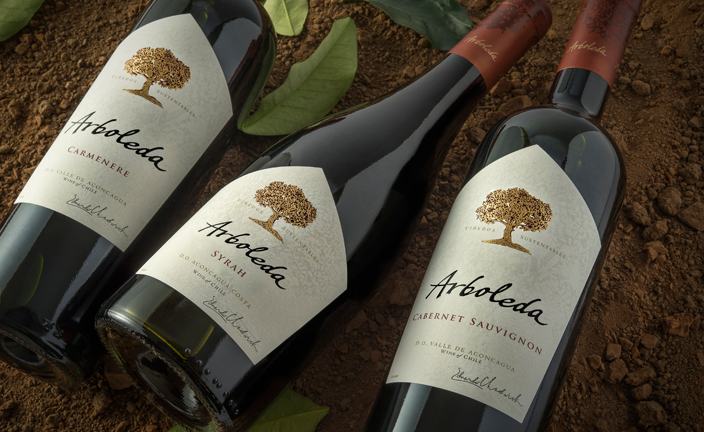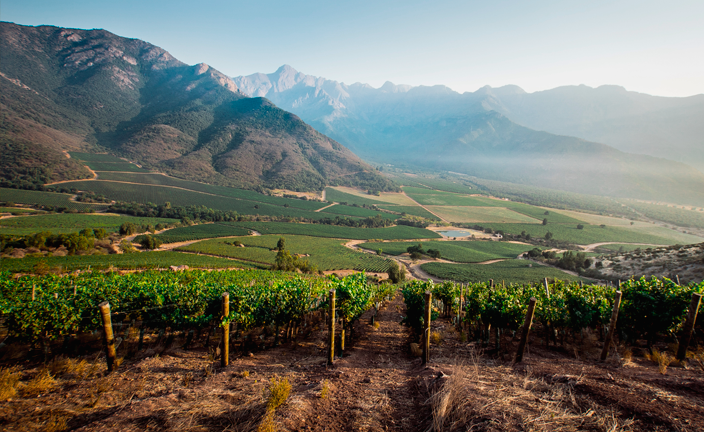Vineyards
- In the Aconcagua Valley -

Aconcagua Valley
Viña Arboleda is located in the Aconcagua Valley, 100 km (62 mi) north of Santiago, Chile’s capital city, and it stretches all the way from the Andes to the Pacific Ocean. This valley takes its name from Mount Aconcagua, which, at 6,960 m (22,800 ft), is the highest peak in the western hemisphere and gives rise to the river that irrigates the valley.
The grapes for the Arboleda wines come from its two estate-owned vineyards, Chilhué and Las Vertientes, both nestled into the generous Aconcagua Valley.
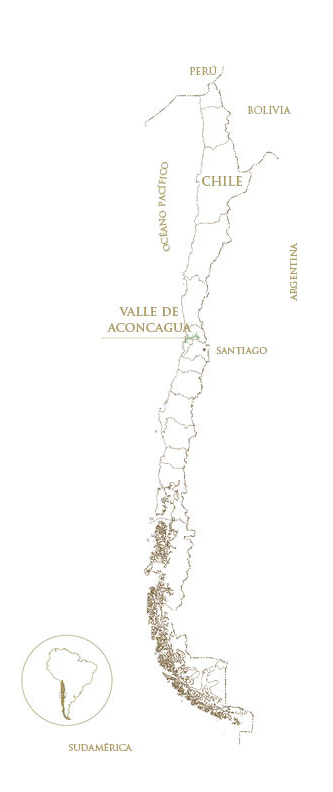
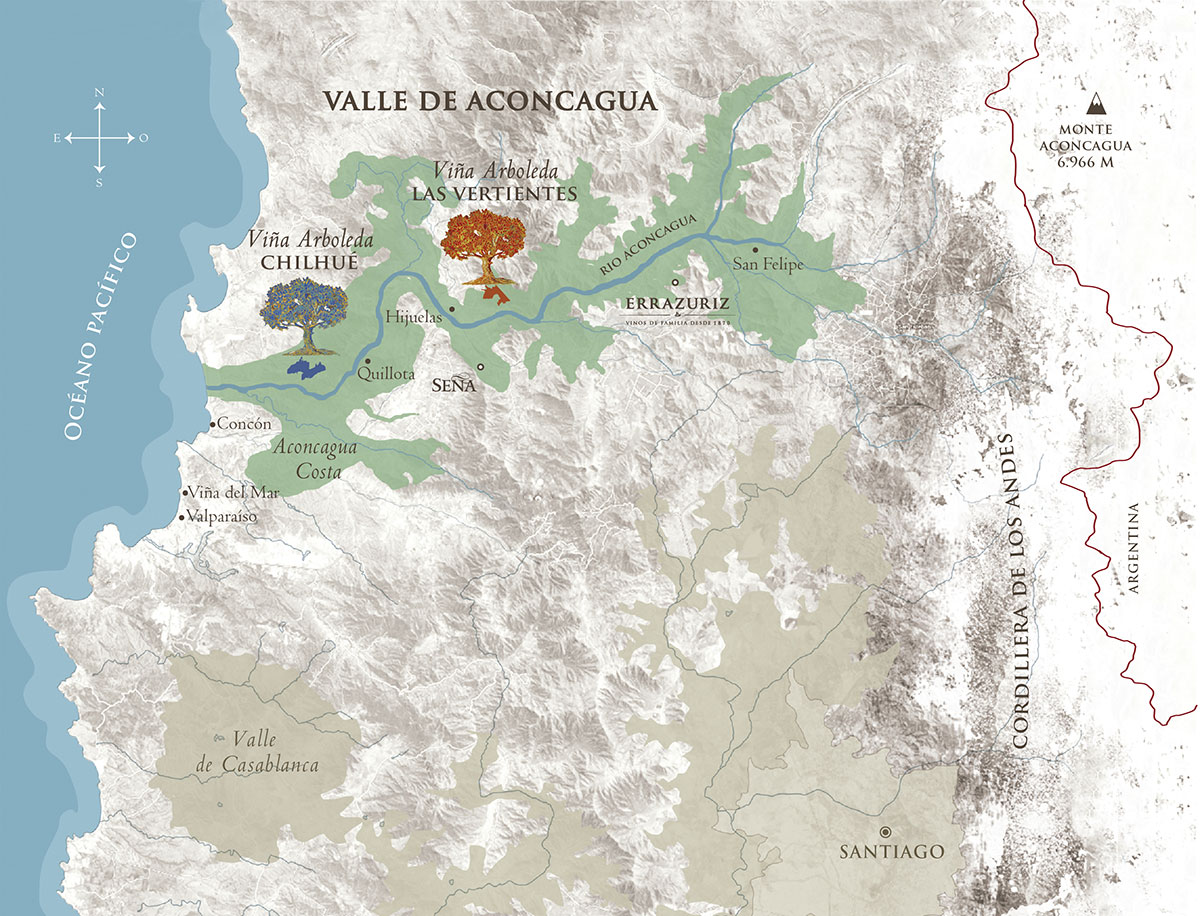
The Vineyard
The Chilhué vineyard is located just 12 km (8 mi) from the cold Pacific Ocean in Aconcagua Costa, specifically in the Quillota locality. Due to the proximity to the sea, the vines grow under a powerful maritime influence, which endows the resulting wines with cool-climate qualities. The 860 ha (2125 ac) property extends over 4 km (2.4 mi) from west to east. The hilly landscape provides a wide range of slope values, exposures and soil profiles. A vast extension of native forests, ravines and endemic wildlife surround 113 ha (279 ac) of vineyards, all planted 100–200 masl and provide the grapes for Arboleda’s Sauvignon Blanc, Chardonnay and Pinot Noir.
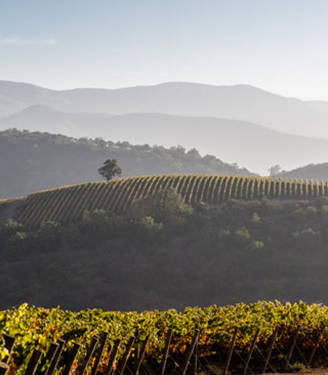
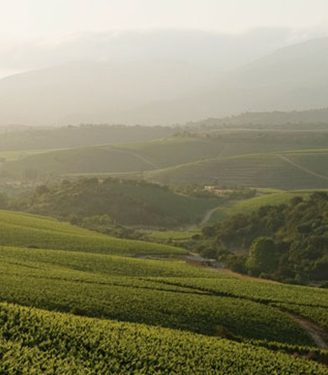
Climate
Chilhué’s cool maritime climate is highly influenced by the cold Pacific Ocean, which brings icy masses of water from the South Pole induced by the Humboldt Current. This results in cooling breezes that refresh the vines in the vineyard and promote the morning fog. This climate will confer freshness to the wines. The growing season is marked by the presence of mild wet winters followed by cool, dry summers. The historic accumulated rainfall between January and December is 276 mm on average.
Soils
The soils are formed over igneous intrusive and extrusive (volcanic) rocks in different stages of metamorphism, with a prevalence of metamorphic rocks such as schist and slate that give the wines a vertical, austere and linear profile. The vineyard’s topography ranges from gentle rolling hills to steep slopes that play a major role in the soil profile. The soils are shallower at the top of the slope, and the depth increases lower on the hillside and are quite deep at the bottom.
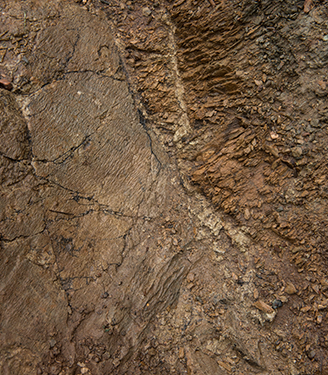
"Chilhué’s cool maritime climate, diverse and hilly topography and metamorphic rock soils combine to result in vibrant and elegant wines. Arboleda Sauvignon Blanc, Chardonnay and Pinot Noir reveal the purity and freshness of the Aconcagua Costa."
Lots Chilhué
-
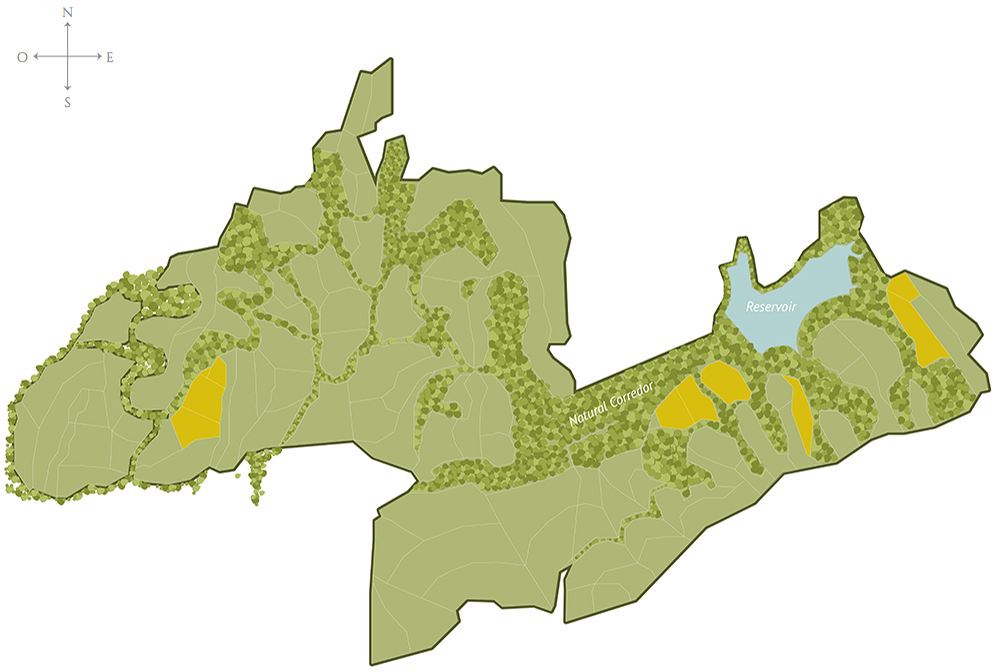
Chardonnay
The Chardonnay blocks are planted facing south, south-east and east on slopes that vary from moderate to very steep. Most of its soils have a high content of weathered schist-type rock.
The first 80 cm of soil is 60% clay-loam with 20% weathered rock, and below 80 cm the soil contains 50–60% rock. Clones 548, 95 and 76. -

Sauvignon Blanc
The Sauvignon Blanc blocks are planted on hillsides facing south and east, which are the coolest spots. Some of them are on soils with a significant presence of schist-type rocks with a balanced vigour, and others are on slightly deeper soils with a higher proportion of loam than rocks.
The first 100 cm of soil includes 10–15% weathered rock and clay-loam, and below 100 cm the soil is 20–30% rock. Clones 1, 242, and 107. -
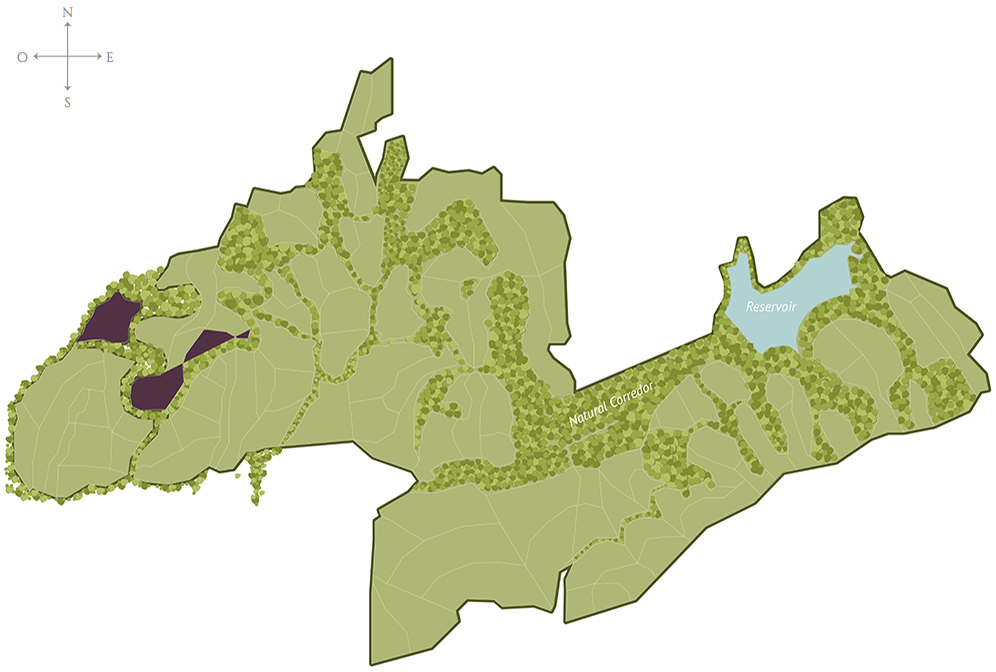
Pinot Noir
The Pinot Noir blocks are planted in the southern and northern sectors of the property, mostly facing west. They are on steep slopes with soils that have a significant percentage of weathered schist-type rocks with a layer of clay-loam.
The first 50 cm of soil includes 20% weathered rock and clay-loam, and below 50 cm the soil is 80% rock. Clones 9, 16, 115 and 777.
The Vineyard
The Las Vertientes vineyard is located 37 km (23 mi) inland from the sea, in the Hijuelas locality. The cool coastal winds blow in from the sea refreshing the Mediterranean climate, allowing the red grapes to ripen slowly. The vineyard is sorrounded by hills, with the vines sitting over the piedmont and part of the alluvial plain and comprises 32 ha (79 ac) of Cabernet Sauvignon, 17 ha (42 ac) of Carmenere, 10 ha (25 ac) of Cabernet Franc and 35 ha (86 ac) of Syrah, all planted 380–590 masl.


Climate
The Mediterranean climate in Las Vertientes, blessed by the cool breezes that blow in from the cold Pacific Ocean, makes this vineyard the coldest area where red Bordeaux grape varieties can still ripen thoroughly. This condition allows the grapes to reach perfectly even ripeness while preserving the fresh character of the wines. The growing season is marked by cold, rainy winters; warm, dry summers and slightly cool autumns. The historic average for accumulated rainfall between January and December is 226 mm.
Soils
The soils are formed over extrusive (volcanic) rocks and colluvial and alluvial deposits. Colluvium is identified on the slope and mostly in the piedmont area with a high percentage of clay, while the alluvial deposits on the gently rolling slopes and flat areas have a high percentage of stones and gravel beneath a layer of loam. This particular vineyard topography and geomorphology provide a wide range of soil textures, best suited to red varieties.

"The Mediterranean climate is blessed by cool breezes and a broad variety of soil textures in the Las Vertientes vineyard, resulting in Arboleda Cabernet Sauvignon, Carmenere and Syrah, wines recognized for their distinctive deep colour, expressive aromas, complexity, balance and elegance, with a common thread of purity."
Lots las vertientes
-

Carmenere
The Carmenere blocks are planted on north-facing hillsides with a 20º–30° slope at the base of the mountains, where they benefit from warmer temperatures and more controlled vigour. The soils are clay-loam with a depth of 60–90 cm and have 15% stones throughout the profile. These vines were planted in 2008 and are a massal selection grafted over 3309 rootstock.
-

Cabernet Sauvignon
The Cabernet Sauvignon blocks are planted on the flat sections of the property, where the soils are clay-loam or sandy-loam and generally 90–200 cm deep. The stone content varies between 30% and 40%, and drainage is good throughout the entire profile. These vines were planted in 1999 and 2000 with ungrafted vines from a massal selection.
-
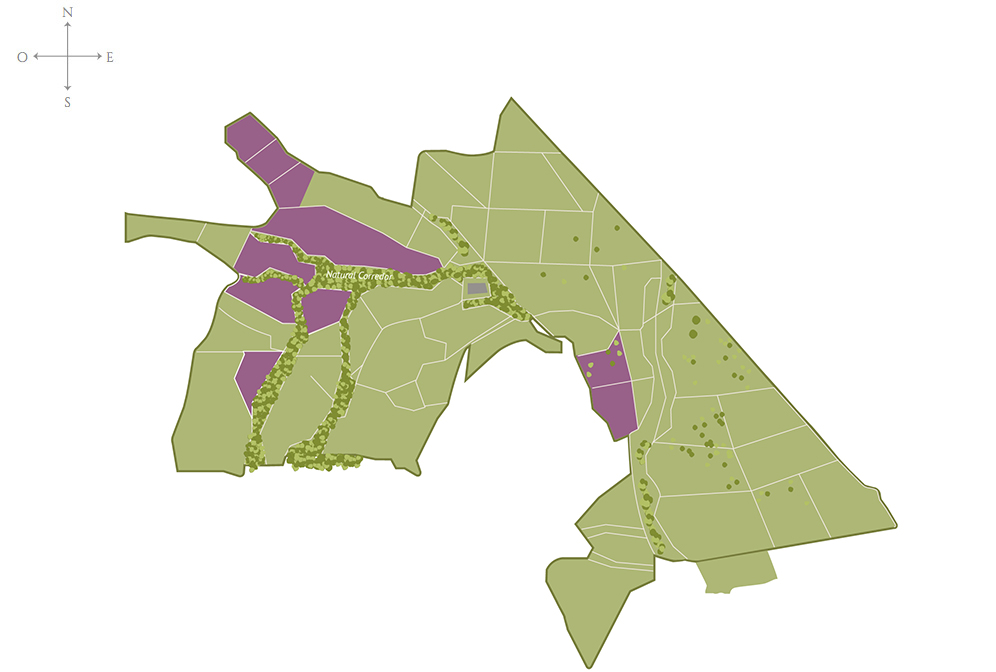
Syrah
The Syrah blocks are planted on sandy-loam and clay-loam soils with a depth of 90–120 cm, 40–45% stones, good drainage and good root development throughout the entire profile. These vines were planted in 1999, 2000, and 2006, and the material was ungrafted massal selection as well as clones 174 and 300.



